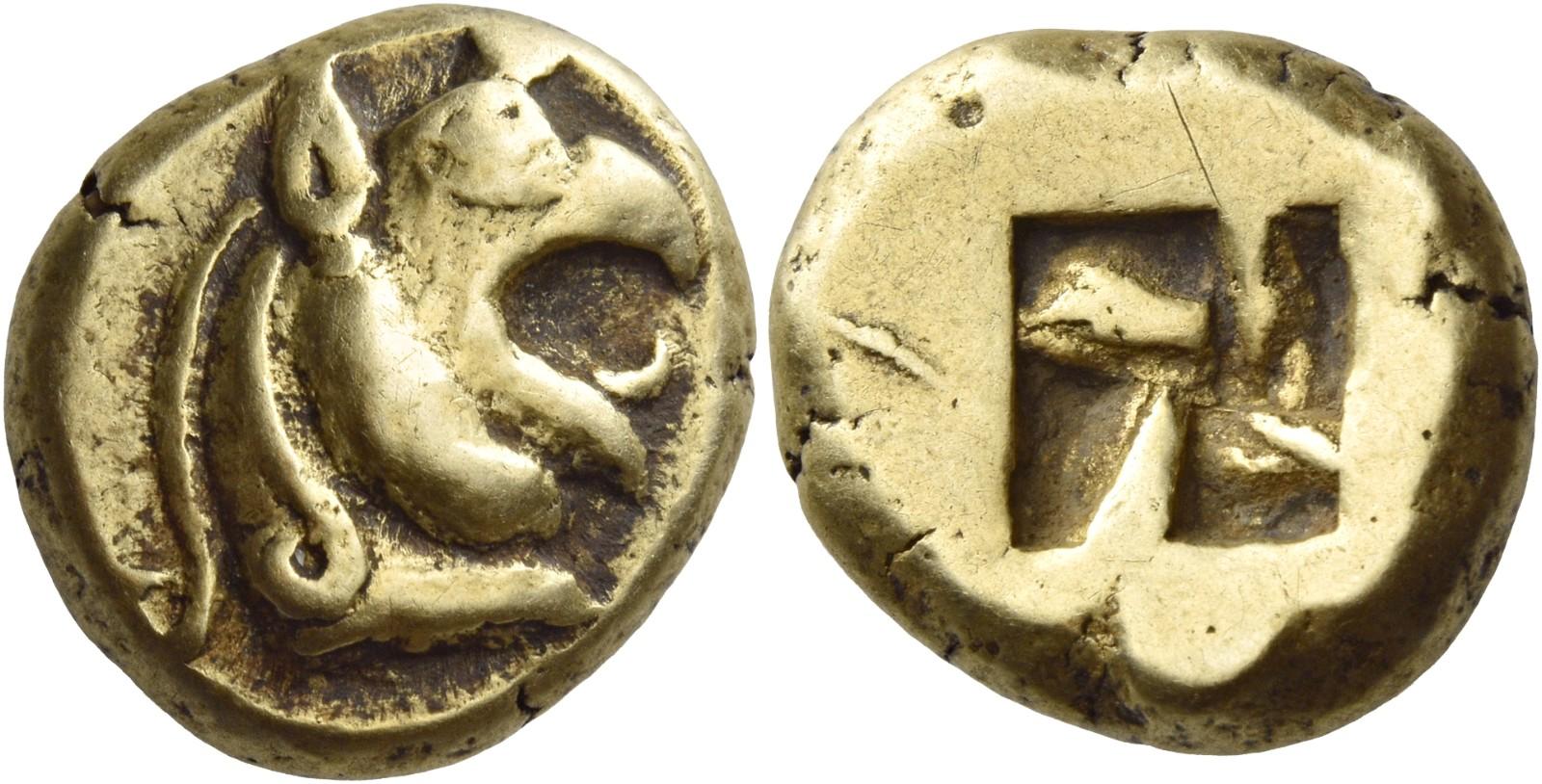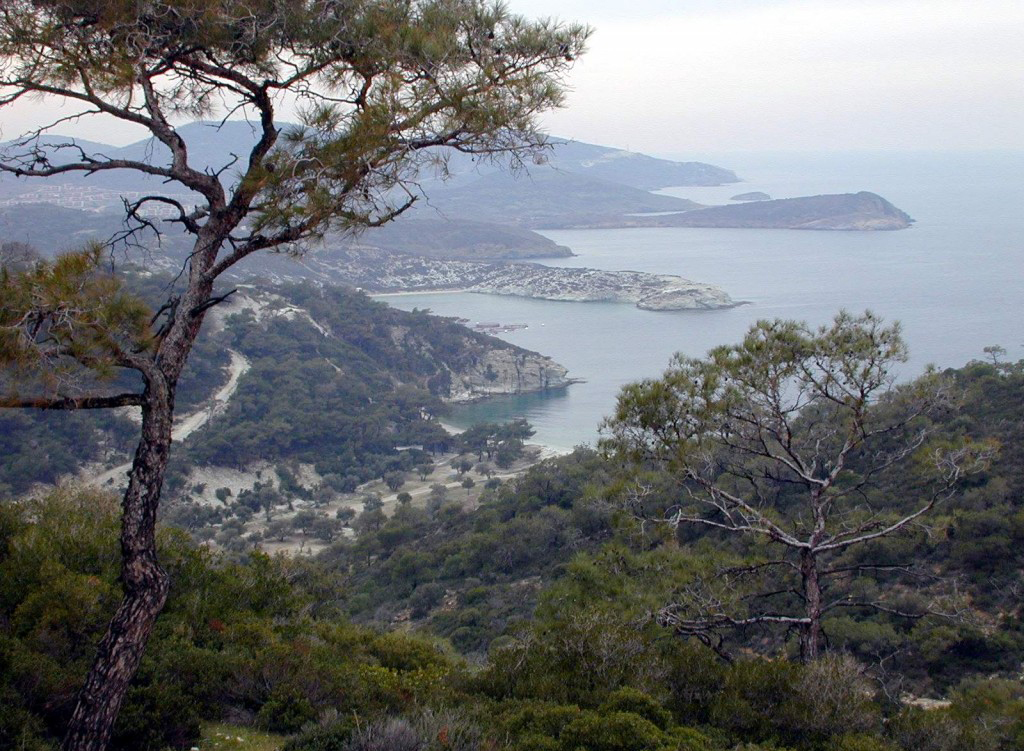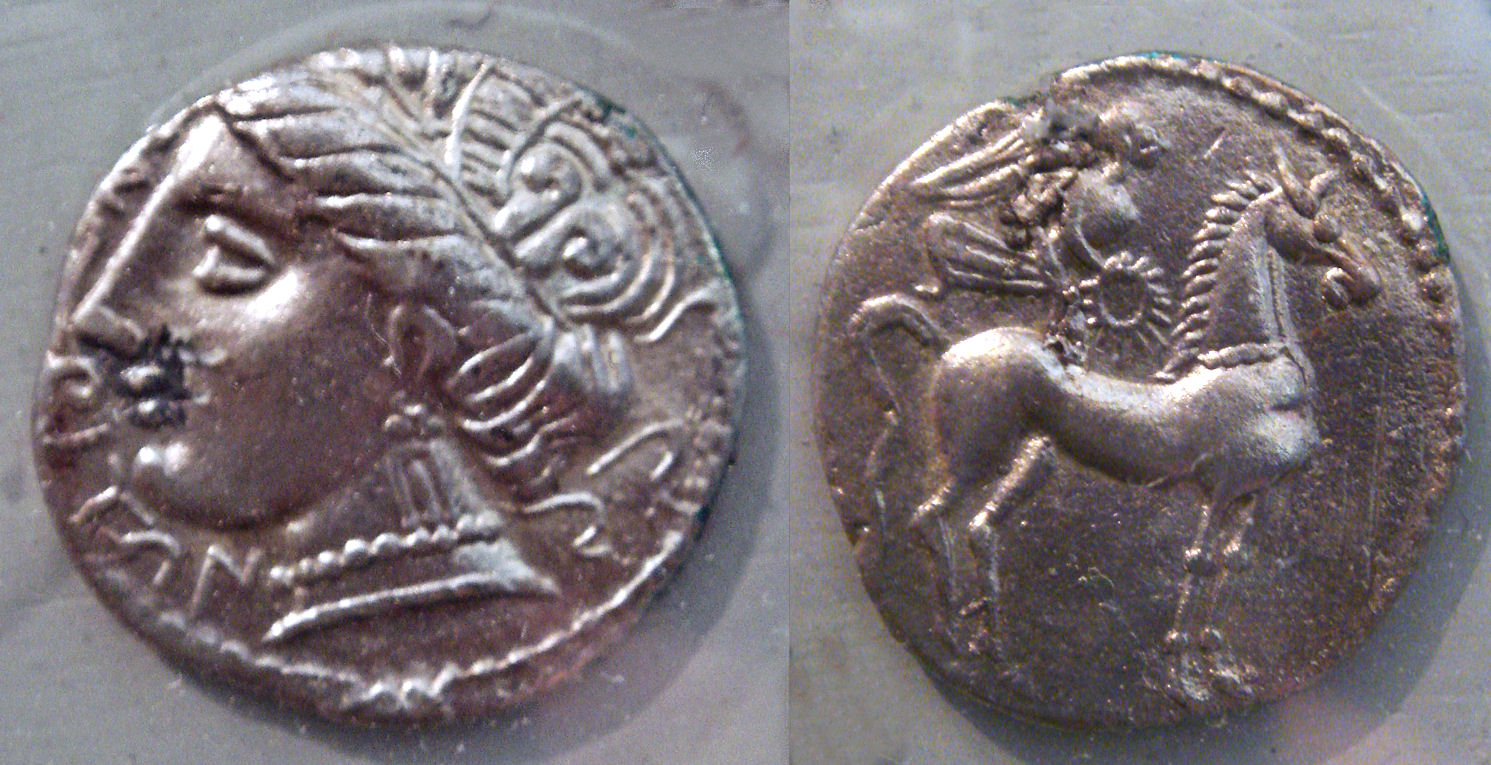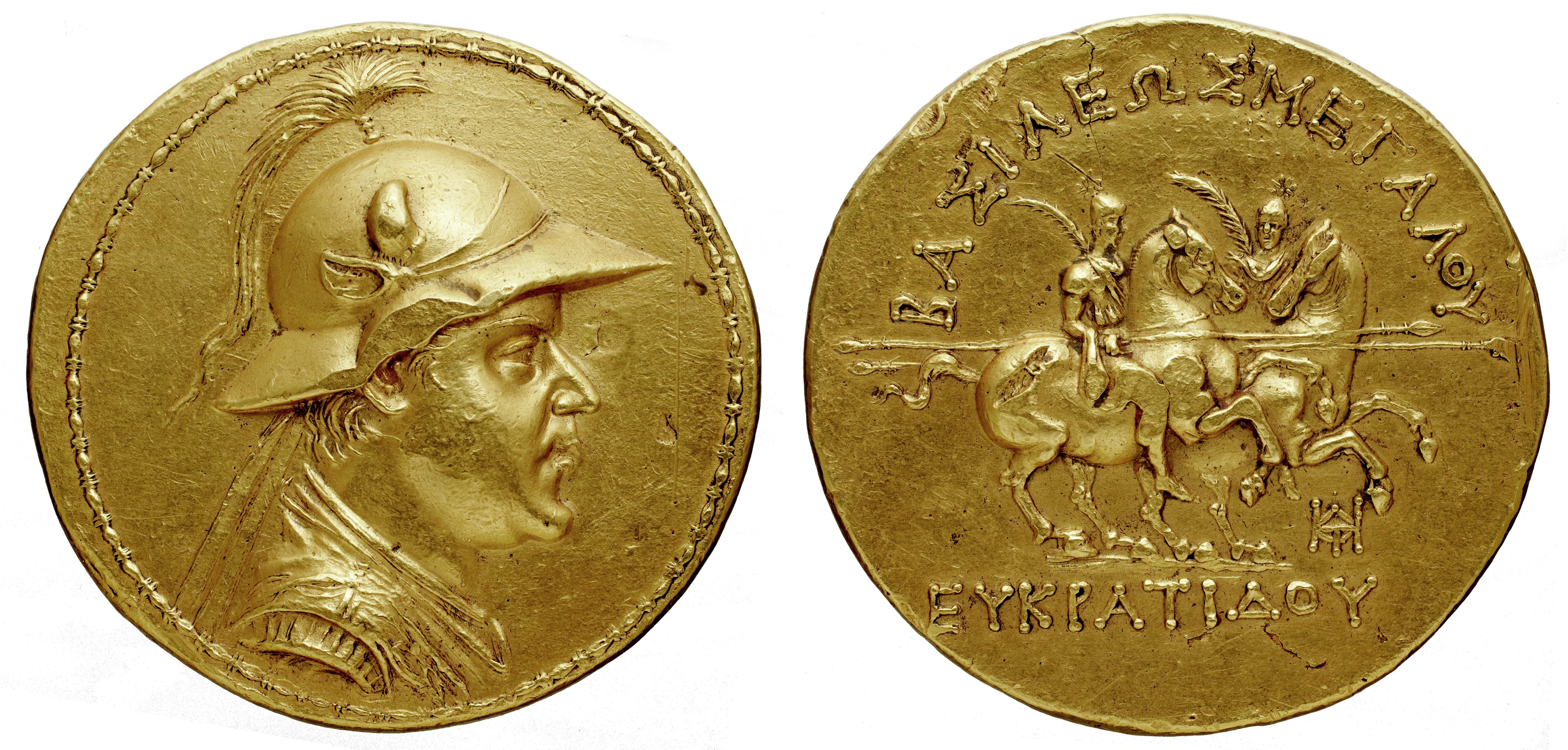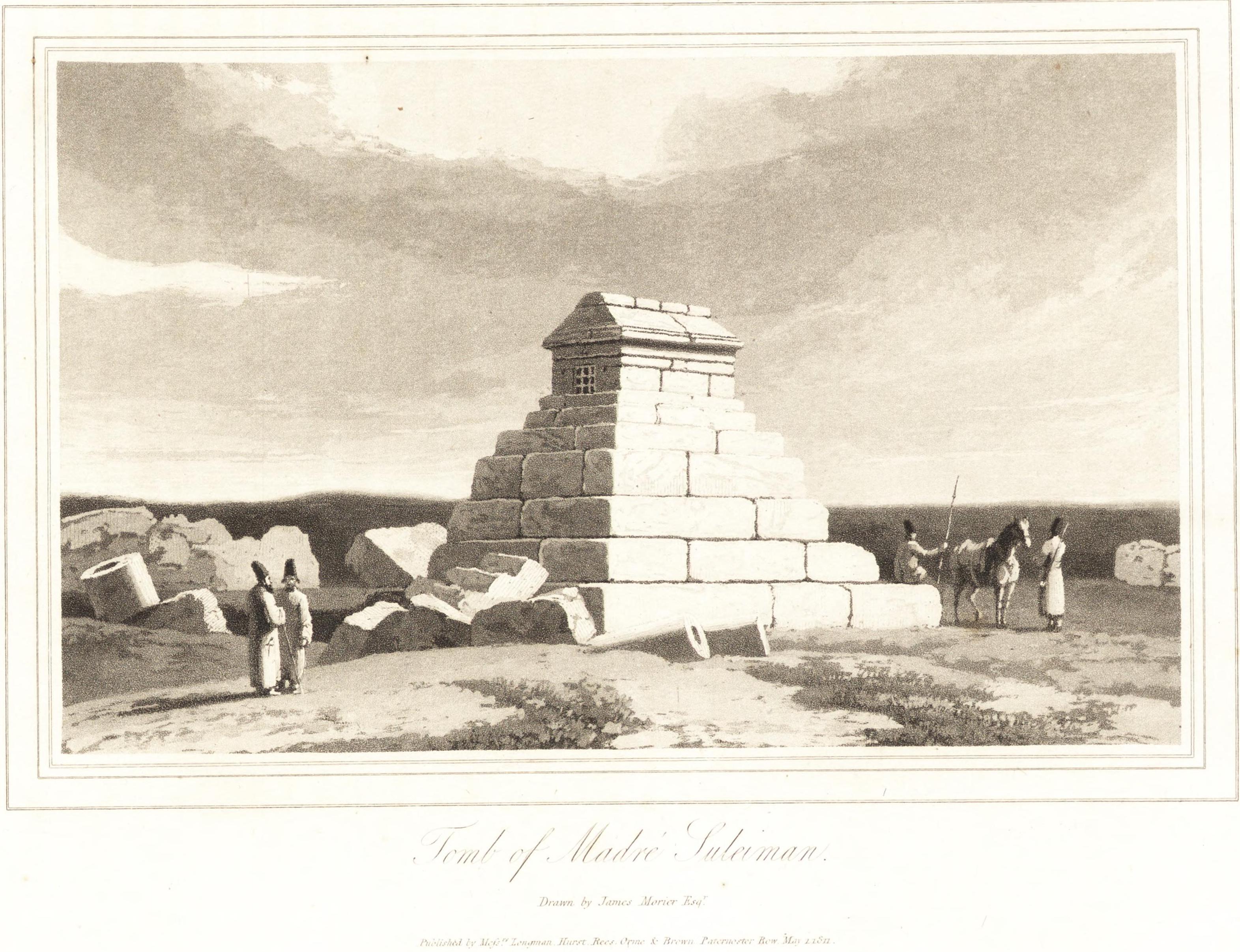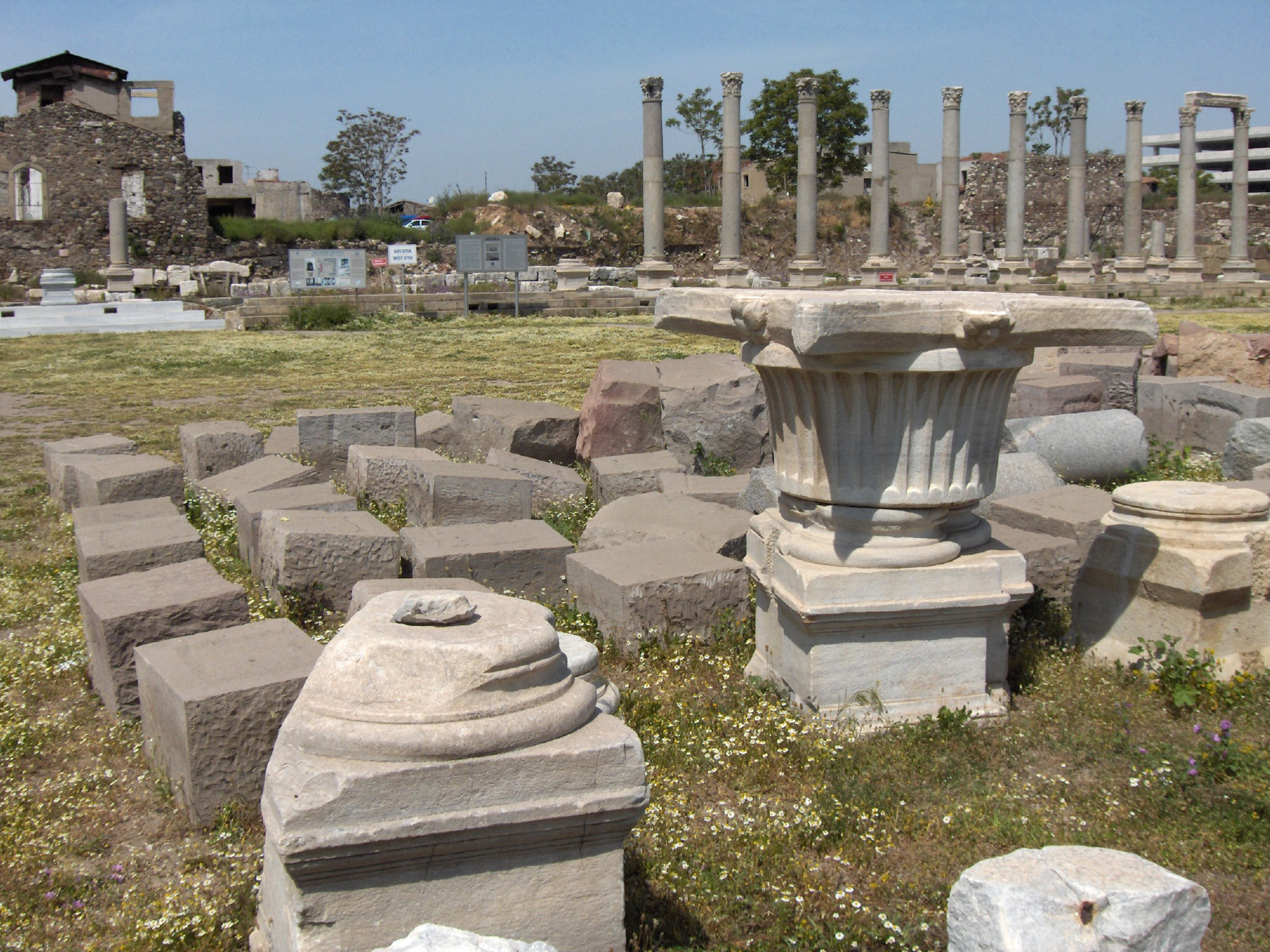|
Phocaean
Phocaea or Phokaia (Ancient Greek: Φώκαια, ''Phókaia''; modern-day Foça in Turkey) was an ancient Ionian Greek city on the western coast of Anatolia. Greek colonists from Phocaea founded the colony of Massalia (modern-day Marseille, in France) in 600 BC, Emporion (modern-day Empúries, in Catalonia, Spain) in 575 BC and Elea (modern-day Velia, in Campania, Italy) in 540 BC. Geography Phocaea was the northernmost of the Ionian cities, on the boundary with Aeolis. It was located near the mouth of the river Hermus (now Gediz), and situated on the coast of the peninsula separating the Gulf of Cyme to the north, named for the largest of the Aeolian cities, and the Gulf of Smyrna (now İzmir) to the south. Phocaea had two natural harbours within close range of the settlement, both containing a number of small islands. Phocaea's harbours allowed it to develop a thriving seafaring economy, and to become a great naval power, which greatly influenced its culture ... [...More Info...] [...Related Items...] OR: [Wikipedia] [Google] [Baidu] |
Foça
Foça is a town and district in Turkey's İzmir Province, on the Aegean coast. The town of Foça is situated at about northwest of İzmir's city center. The district also has a township with its own municipality named Yenifoça (literally ''"New Foça"''), also along the shore and at a distance of from Foça proper. For this reason, Foça itself is locally often called as Eskifoça (''"Old Foça"'') in daily parlance. The town is built on the site of the ancient city of Phocaea ( el, Φώκαια). History The town of Phocaea (Φώκαια) was founded by ancient Greeks. Phocaea, named after the seals living in nearby islands, was founded by the Aeolian Greeks in the 11th century BC. Ionian Greek settlement in Phocaea, which was one of the most important settlements of Ionia at that time, started in the 9th century BC. Phocaeans, known as master sailors in history, also established many colonies in the Aegean, Mediterranean and Black Sea with their engineering develop ... [...More Info...] [...Related Items...] OR: [Wikipedia] [Google] [Baidu] |
Massalia
Massalia (Greek: Μασσαλία; Latin: Massilia; modern Marseille) was an ancient Greek colony founded ca. 600 BC on the Mediterranean coast of present-day France, east of the river Rhône, by Ionian Greek settlers from Phocaea, in Western Anatolia. Marseille is the oldest city of France, and one of Europe's oldest continuously inhabited settlements. History Massalia was established ca. 600 BC by Ionian Greek settlers from Phocaea, in Western Anatolia. After the capture of Phocaea by the Persians in 545 BC, a new wave of settlers fled towards the colony. A creation myth telling the meeting between the Greeks and the local population is given by Aristotle and Pompeius Trogus (see founding myth of Marseille). After the middle of the 6th century BC, Massalia became an important trading post of the western Mediterranean area. It grew into creating colonies of its own on the sea coast of Gallia Narbonensis during the 4th and 3rd centuries BC, including Agathe (late 5th ... [...More Info...] [...Related Items...] OR: [Wikipedia] [Google] [Baidu] |
Empúries
Empúries ( ca, Empúries ) was an ancient city on the Mediterranean coast of Catalonia, Spain. Empúries is also known by its Spanish name, Ampurias ( es, Ampurias ). The city Ἐμπόριον ( el, Ἐμπόριον, Emporion, meaning "trading place", ''cf.'' emporion) was founded in 575 BC by Greek colonists from Phocaea. After the invasion of Gaul from Iberia by Hannibal the Carthaginian general in 218 BC, the city was occupied by the Romans (Latin: ). In the Early Middle Ages, the city's exposed coastal position left it open to marauders and it was abandoned. Empúries is located within the Catalan comarca of Alt Empordà on Costa Brava. The ruins are midway between the town of L'Escala and the tiny village of Sant Martí d'Empúries. History Empúries was founded on a small island at the mouth of the river Fluvià, in a region inhabited by the Indigetes (at the present time, the mouth of the Fluvià is about 6 km to the north). This city c ... [...More Info...] [...Related Items...] OR: [Wikipedia] [Google] [Baidu] |
Velia
, alternate_name = Hyele, Ele, Elea , image = Velia Excavation and Tower.jpg , alt = , caption = View of the excavations and the tower at Velia , map_type = Italy , map_alt = , map_size = , relief = , coordinates = , location = Velia, Province of Salerno, Campania, Italy , region = Magna Graecia , type = Settlement , part_of = , length = , width = , area = , height = , builder = Settlers from Phocaea , material = , built = Between 538 and 535 BC , abandoned = , epochs = , cultures = , dependency_of = , occupants = Parmenides, Zeno, Statius , event = , excavations = , archaeologists = , condition = , ownership = , management = Soprintendenza per i Beni Archeologici di Salerno, Avellino, Benevento e Caserta , public_access = , website Parco archeologico di Elea-Velia , notes = Velia was the Roman name of an ancient city of Magna Graecia on the coast of the Tyrrhenian Sea. It was founded by Greeks from Phocaea as Hyel ... [...More Info...] [...Related Items...] OR: [Wikipedia] [Google] [Baidu] |
Ionian League
The Ionian League ( grc, Ἴωνες, ''Íōnes''; , ''koinón Iōnōn''; or , ''koinē sýnodos Iōnōn''; Latin: ''commune consilium''), also called the Panionic League, was a confederation formed at the end of the Meliac War in the mid-7th century BC comprising twelve Ionian Greek city-states (a dodecapolis, of which there were many others). The Ionian League was the first alliance of city-states in the region. Overview The twelve ancient city-states were listed by Herodotus as:Herodotus. ''The Histories''1.142 *Miletus, Myus, and Priene — all located in Caria (a region in Asia Minor) and speaking the same dialect; *Ephesus, Colophon, Lebedus, Teos, Clazomenae and Phocaea — all located in Lydia and/or the region known today as Ionia (both also in Asia Minor, Lydia extending inland much farther relative to Ionia), speaking another dialect; * Chios (island) and Erythrae (Asia Minor) — with a common dialect; and * Samos (island) — with its own dialect. After ... [...More Info...] [...Related Items...] OR: [Wikipedia] [Google] [Baidu] |
Athens
Athens ( ; el, Αθήνα, Athína ; grc, Ἀθῆναι, Athênai (pl.) ) is both the capital city, capital and List of cities and towns in Greece, largest city of Greece. With a population close to four million, it is also the seventh List of urban areas in the European Union, largest city in the European Union. Athens dominates and is the capital of the Attica (region), Attica region and is one of the List of oldest continuously inhabited cities, world's oldest cities, with its recorded history spanning over 3,400 years and its earliest human presence beginning somewhere between the 11th and 7th millennia BC. Classical Athens was a powerful Greek city-state, city-state. It was a centre for the arts, learning and philosophy, and the home of Plato's Platonic Academy, Academy and Aristotle's Lyceum (classical), Lyceum. It is widely referred to as the cradle of civilization, cradle of Western culture, Western civilization and the democracy#History, birthplace of democracy, larg ... [...More Info...] [...Related Items...] OR: [Wikipedia] [Google] [Baidu] |
Phocis (ancient Region)
Phocis was an ancient region in the central part of Ancient Greece, which included Delphi. A modern administrative unit, also called Phocis, is named after the ancient region, although the modern region is substantially larger than the ancient one. Geopolitically, Phocis was the country of the Phocians, who spoke their own version of Doric Greek, one of the three main dialects of ancient Greek. They were one of several small mountain states of Central Greece, whose dialects are classified as Northwest Doric. It was from their region that the Dorians crossed the Gulf of Corinth at the beginning of the Greek Iron Age to burn Pylos and other southern Greek strongholds and seize control of the Peloponnesus. The dialects of the two groups of Dorians north and south of the Gulf then began to diverge. One of the states around Phocis was still called Doris in classical times. As there is considerable evidence that the invasion began about 1000 BC, the ancestors of the classical Phoc ... [...More Info...] [...Related Items...] OR: [Wikipedia] [Google] [Baidu] |
Pausanias (geographer)
Pausanias ( /pɔːˈseɪniəs/; grc-gre, Παυσανίας; c. 110 – c. 180) was a Greek traveler and geographer of the second century AD. He is famous for his ''Description of Greece'' (, ), a lengthy work that describes ancient Greece from his firsthand observations. ''Description of Greece'' provides crucial information for making links between classical literature and modern archaeology. Biography Not much is known about Pausanias apart from what historians can piece together from his own writing. However, it is mostly certain that he was born c. 110 AD into a Greek family and was probably a native of Lydia in Asia Minor. From c. 150 until his death in 180, Pausanias travelled through the mainland of Greece, writing about various monuments, sacred spaces, and significant geographical sites along the way. In writing ''Description of Greece'', Pausanias sought to put together a lasting written account of "all things Greek", or ''panta ta hellenika''. Living in th ... [...More Info...] [...Related Items...] OR: [Wikipedia] [Google] [Baidu] |
Stater Coin Of Phokaia With Griffin
The stater (; grc, , , statḗr, weight) was an ancient coin used in various regions of Greece. The term is also used for similar coins, imitating Greek staters, minted elsewhere in ancient Europe. History The stater, as a Greek silver currency, first as ingots, and later as coins, circulated from the 8th century BC to AD 50. The earliest known stamped stater (having the mark of some authority in the form of a picture or words) is an electrum turtle coin, struck at Aegina that dates to about 650 BC. It is on display at the Bibliothèque Nationale in Paris. According to Robin Lane Fox, the stater as a weight unit was borrowed by the Euboean stater weighing from the Phoenician shekel, which had about the same weight as a stater () and was also one fiftieth of a mina.Lane Fox, Robin. ''Travelling Heroes: Greeks and Their Myths in the Epic Age of Homer''. P. 94. London: Allen Lane, 2008. The silver stater minted at CorinthSmith, William. ''A Dictionary of Greek and ... [...More Info...] [...Related Items...] OR: [Wikipedia] [Google] [Baidu] |
Tomb Of Cyrus
The Tomb of Cyrus ( – ''Ârâmgâh ye Kuroš Bozorg'') is the final resting place of Cyrus the Great, the founder of the ancient Achaemenid Empire. The mausoleum is located in Pasargadae, an archaeological site in the Fars Province of Iran. It was first identified as Cyrus' tomb in modern times by James Justinian Morier, who compared the monument to that described in the writings of Greek historian Arrian. The mausoleum is a significant historical example of earthquake engineering as it is said to be the oldest base-isolated structure in the world, allowing it great resilience against seismic hazards. It is one of the key Iranian cultural heritage sites. On the 29th of October 2021, Iranian police barred people from visiting the mausoleum. The site of the tomb is shut down every year during Cyrus the Great Day following a pro-monarchy protest in 2016. Identification The tomb, previously known as the ''Tomb of Madre Suleiman'' (referring either to Caliph Sulayman ibn Abd ... [...More Info...] [...Related Items...] OR: [Wikipedia] [Google] [Baidu] |
Aeolis
Aeolis (; grc, Αἰολίς, Aiolís), or Aeolia (; grc, Αἰολία, Aiolía, link=no), was an area that comprised the west and northwestern region of Asia Minor (modern-day Turkey), mostly along the coast, and also several offshore islands (particularly Lesbos), where the Aeolian Greek city-states were located. Aeolis incorporated the southern parts of Mysia, and is bounded by it to the north, Ionia to the south, and Lydia to the east. Geography Aeolis was an ancient district on the western coast of Asia Minor. It extended along the Aegean Sea from the entrance of the Hellespont (now the Dardanelles) south to the Hermus River (now the Gediz River). It was named for the Aeolians, some of whom migrated there from Greece before 1000 BC. Aeolis was, however, an ethnological and linguistic enclave rather than a geographical unit. The district often was considered part of the larger northwest region of Mysia. History According to Homer's ''Odyssey'', Odysseus, after hi ... [...More Info...] [...Related Items...] OR: [Wikipedia] [Google] [Baidu] |
Stadion (unit)
The stadion (plural stadia, grc-gre, ; latinized as stadium), also anglicized as stade, was an ancient Greek unit of length, consisting of 600 Ancient Greek feet (''podes''). Calculations According to Herodotus, one stadium was equal to 600 Greek feet (''podes''). However, the length of the foot varied in different parts of the Greek world, and the length of the stadion has been the subject of argument and hypothesis for hundreds of years. An empirical determination of the length of the stadion was made by Lev Vasilevich Firsov, who compared 81 distances given by Eratosthenes and Strabo with the straight-line distances measured by modern methods, and averaged the results. He obtained a result of about . Various equivalent lengths have been proposed, and some have been named. Among them are: Which measure of the stadion is used can affect the interpretation of ancient texts. For example, the error in the calculation of Earth's circumference by Eratosthenes or Posid ... [...More Info...] [...Related Items...] OR: [Wikipedia] [Google] [Baidu] |
